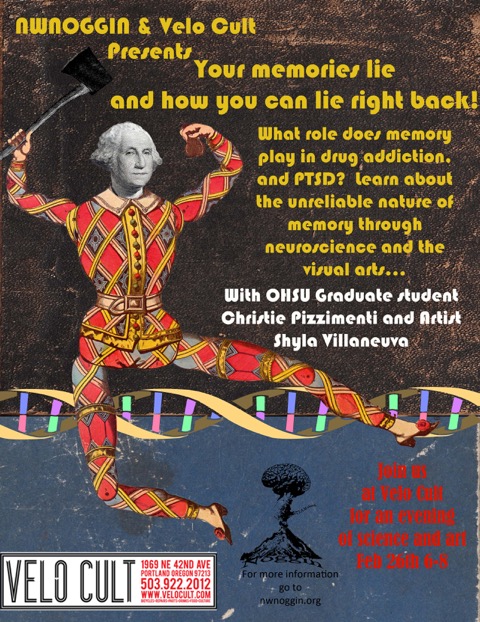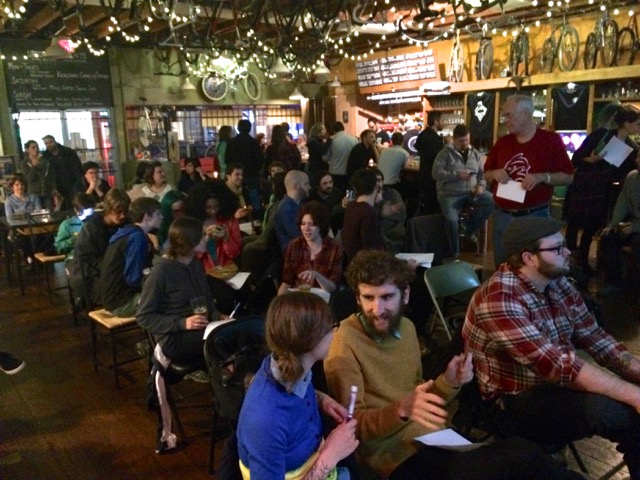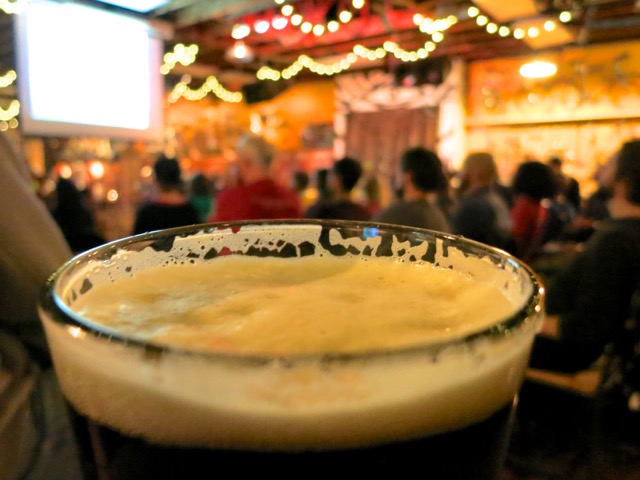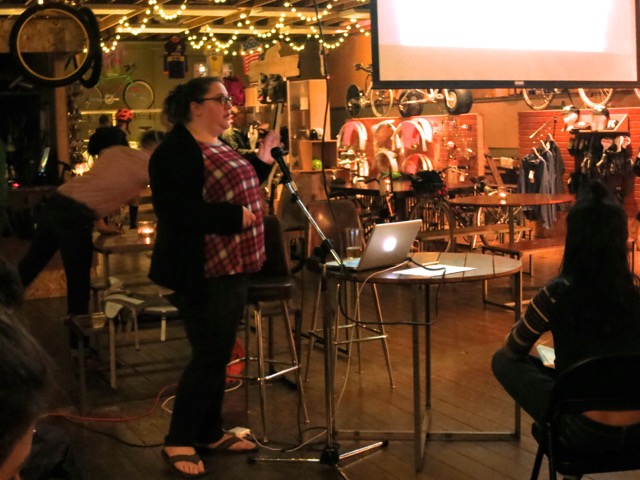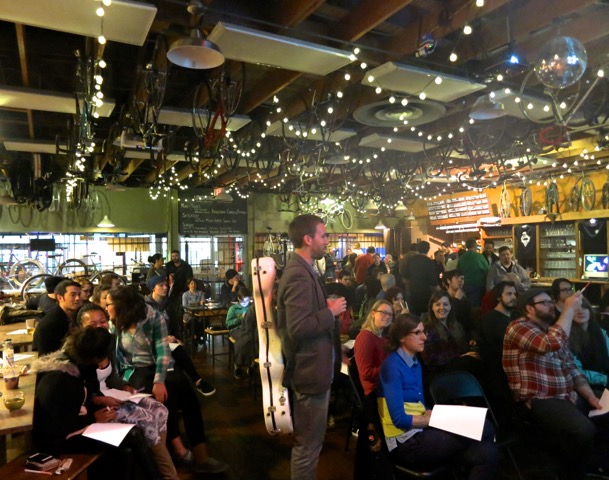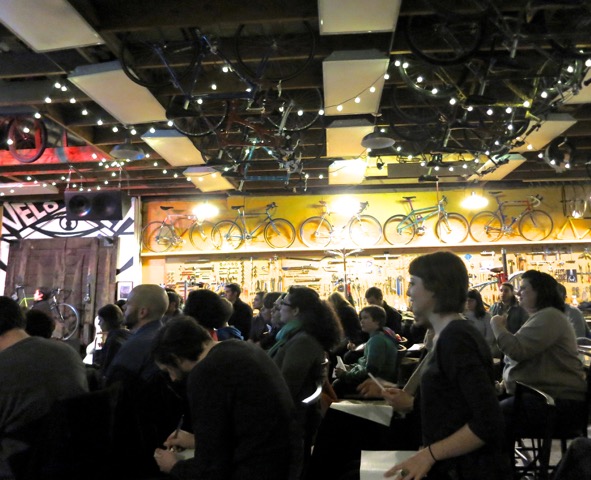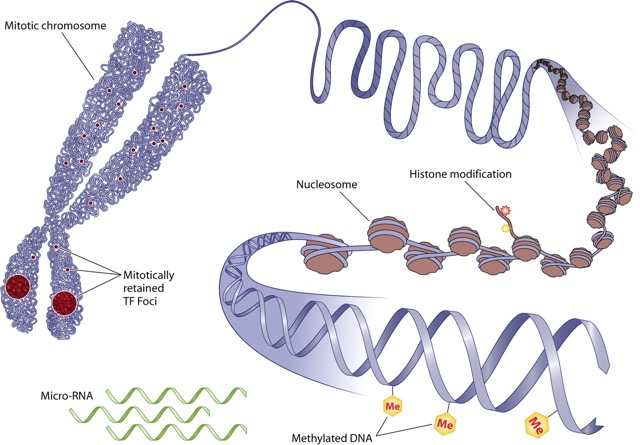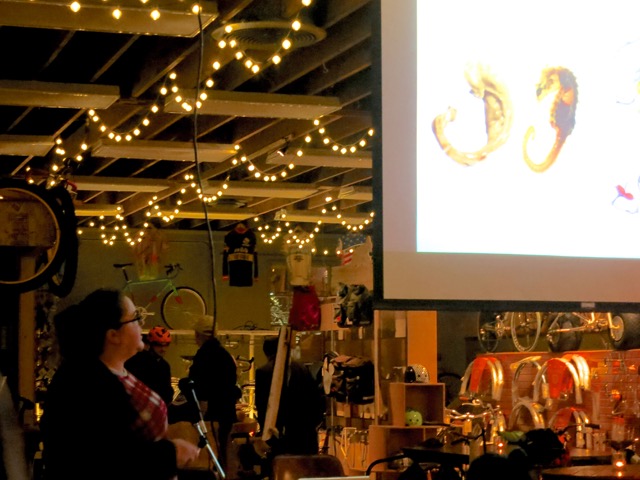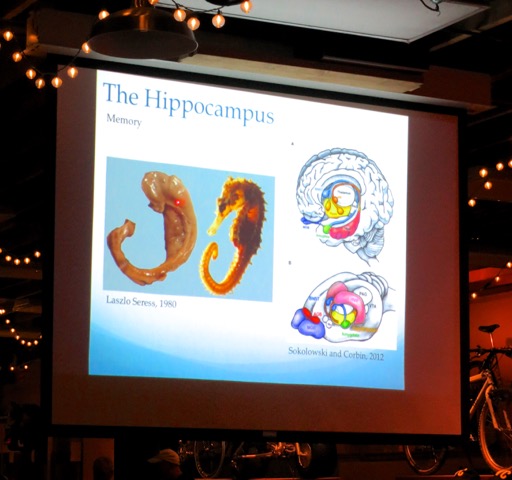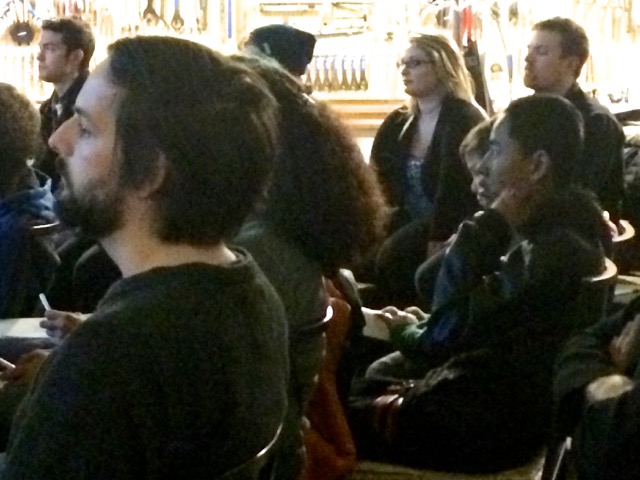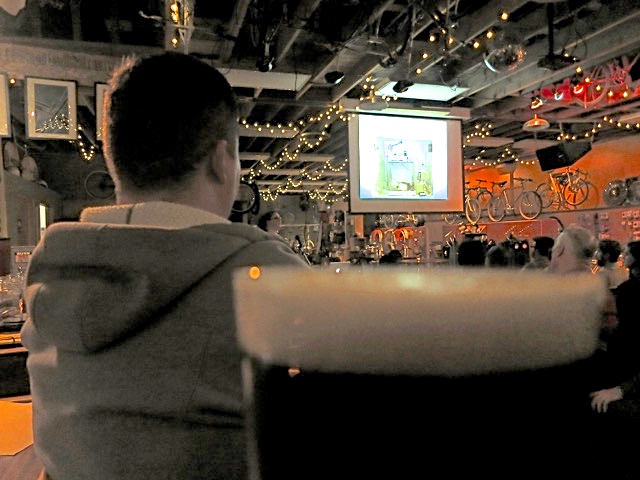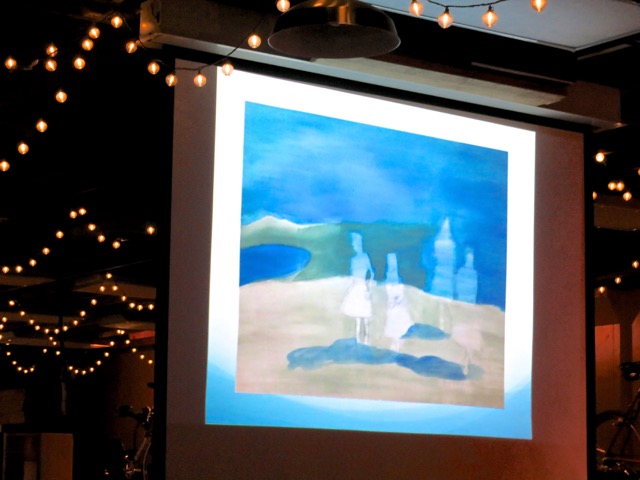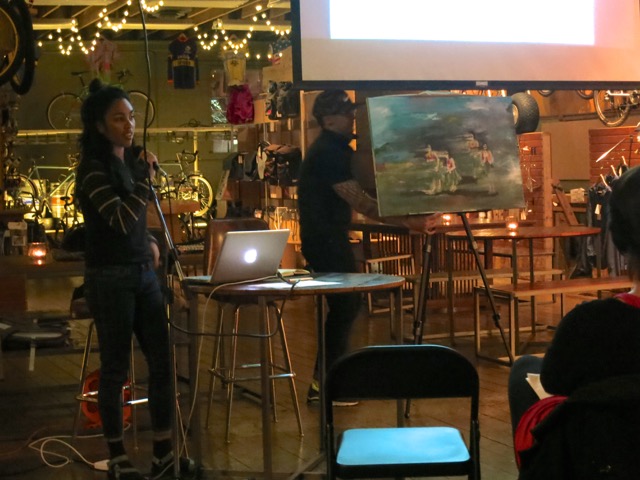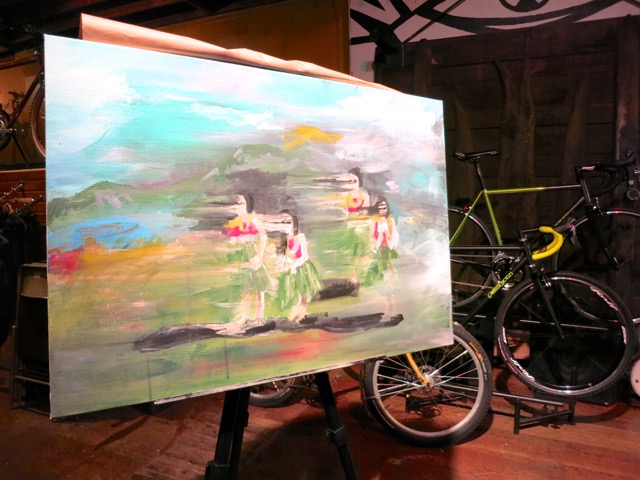This week our Velo crowd explored how memories depend on changes in neuron connections (i.e., synapses), and how these changes require expression of specific genes…
Christie Pizzimenti, a graduate student in Behavioral Neuroscience at OHSU, enthusiastically described her research on how PTSD and substance use disorders involve powerful “excitatory” memory expression in the wrong contexts; that is, terrible anxiety, panic and fear suffered by a soldier at home in suburban Portland, where no threat now exists, or relapse once you’re back around the neighborhood bars…
Genetic expression requires the literal unwinding of specific segments of DNA from protein spools on the chromosomes called histones. Enzymes known as HDACs act to close off these accessible DNA stretches, thus preventing the expression of genes and the building of proteins required to alter those synaptic connections, and form memories…
Drugs called HDAC inhibitors stop your HDACs from closing up genes, and maintain increased gene expression caused by a learning experience – for example, that learning to avoid more drug seeking you acquired during rehab, or important stress reduction techniques practiced during cognitive behavioral therapy counseling for PTSD…
The ability to contextualize learning – to display the appropriate behavior in the right environmental context, requires participation by the hippocampus, a critical portion of the medial temporal lobe essential for episodic and spatial memory formation…
Christie helpfully pointed out how much the hippocampus (from the Greek sea horse of mythology) looks like a sea horse, and offered research-based tips on how to literally grow new neurons in this structure, through aerobic exercise, and good sleep. Hippocampal “neurogenesis” can improve your ability to remember…
Work from Christie’s lab at OHSU, and other labs, has shown that HDAC inhibitors can significantly enhance memory acquired during a learning experience; specifically during what’s known as “extinction” of a behavior.
For example, a rat that learns to press a bar for delivery of cocaine when a tone is presented will ultimately stop bar pressing when the tone is no longer paired with drug. Over time, the rat “extinguishes” the bar pressing behavior in response to the tone…
But if enough time passes following extinction (think a few months after rehab), and the rat is placed back in the chamber and presented with that same tone, it will start bar pressing again like crazy!
Yet if the rat is given HDAC inhibitors during extinction (rehab), gene expression is enhanced, stronger memories form, and the rat stays away from the “bar…”
During this fascinating presentation, Shyla Villanueva, an art student from PNCA, introduced a painting she’d begun, based on a childhood photo from her parents showing her playing with a hula hoop. She had no memory of this experience at the start…
Audience members drew what they saw during this initial viewing, which was brief, and were then asked later to try recalling what was on the canvas…
Christie made several efforts to disrupt that initial memory by introducing additional works of art during her talk, including paintings by Renoir, Dali and Seurat…
Shyla spoke passionately about the unreliability of memory, and the role of art in efforts to re-create, preserve and influence what we recall. She then presented her finished work…
Shyla’s painting helped her construct a new memory based on this unremembered childhood moment…
Thanks to both our presenters – and Velo Cult – and cheers!



